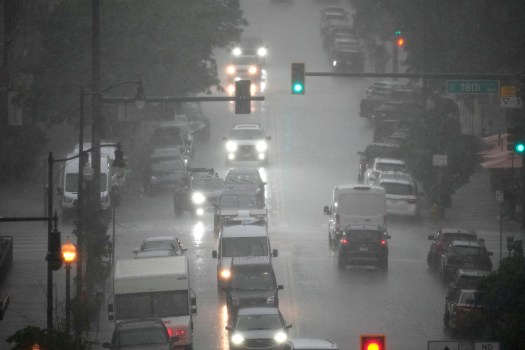How to Stay Safe During a Dust Storm: Essential Tips and Recent Events
Dust storms can develop quickly, reducing visibility and creating dangerous conditions for drivers and residents. These storms often happen in dry regions, but recent events show they can strike anywhere under the right circumstances. Understanding how to stay safe during a dust storm is essential—especially as weather patterns grow more unpredictable.

What Causes a Dust Storm?
Dust storms form when strong winds lift loose dust and sand from the ground, creating clouds that travel for miles. They can start ahead of severe thunderstorms or as a result of high winds alone. Visibility can drop to near zero in seconds, creating a significant danger for motorists.
Recent Dust Storm Events in the Midwest
In May 2025, powerful thunderstorms swept through the southern Nebraska Panhandle and northeastern Colorado. Winds reached up to 75 mph, toppling trees and causing widespread blackouts. In Colorado, a wall of dust developed across stretches of Interstate 76 and Interstate 80, making driving extremely hazardous. Reports highlighted how quickly visibility vanished, catching many drivers off-guard. According to News Channel Nebraska, emergency services responded to multiple incidents caused by downed trees and flying debris.
The National Weather Service also warned residents across Colorado about severe winds and hail, making situations even more complicated. Their special statement urged people to seek shelter as storms brought dangerous weather, including heavy rain and lightning.
Staying Safe During a Dust Storm
- Seek Shelter: If a dust storm approaches, immediately move indoors. Stay away from windows and doors to avoid flying debris.
- Avoid Driving: Never try to drive through a dust storm. Pull off the road, turn off your lights, and keep your foot off the brake pedal so others don’t follow your tail lights by mistake.
- Protect Breathing: If you are caught outside, cover your nose and mouth with a cloth or mask to reduce dust inhalation. Dust storms carry fine particles that can harm your lungs.
- Monitor Weather Warnings: Listen for alerts from local authorities or the National Weather Service. Up-to-date information can help you make informed decisions quickly.
The Impact of Dust Storms
Dust storms are not only dangerous for traffic. They can cause respiratory problems, property damage, and power outages. In the recent Nebraska and Colorado storms, fallen trees damaged homes and power lines. Large hail increased the risk for anyone caught outdoors. To read more about these extreme conditions, check out the Denver Post’s coverage on recent hail and high winds.
Conclusion: Be Prepared for Sudden Weather Changes
Dust storms may arrive with little warning, but preparation can save lives. Stay alert to weather forecasts, know how to react, and never underestimate the speed or power of a developing storm. For more in-depth coverage on severe storms and dust events in your area, visit Panhandle News Channel Nebraska. Stay safe, stay informed, and always respect the power of nature.